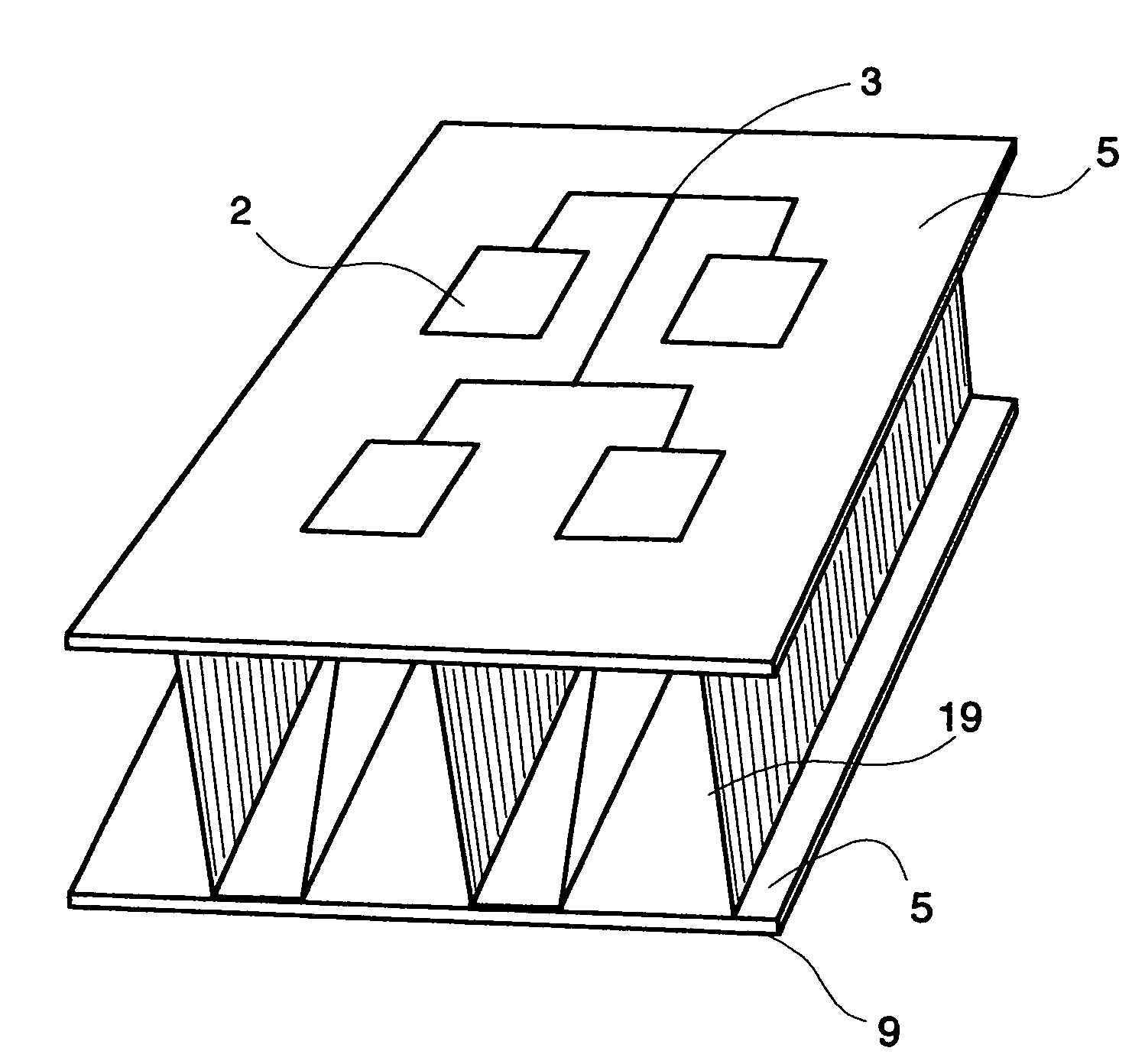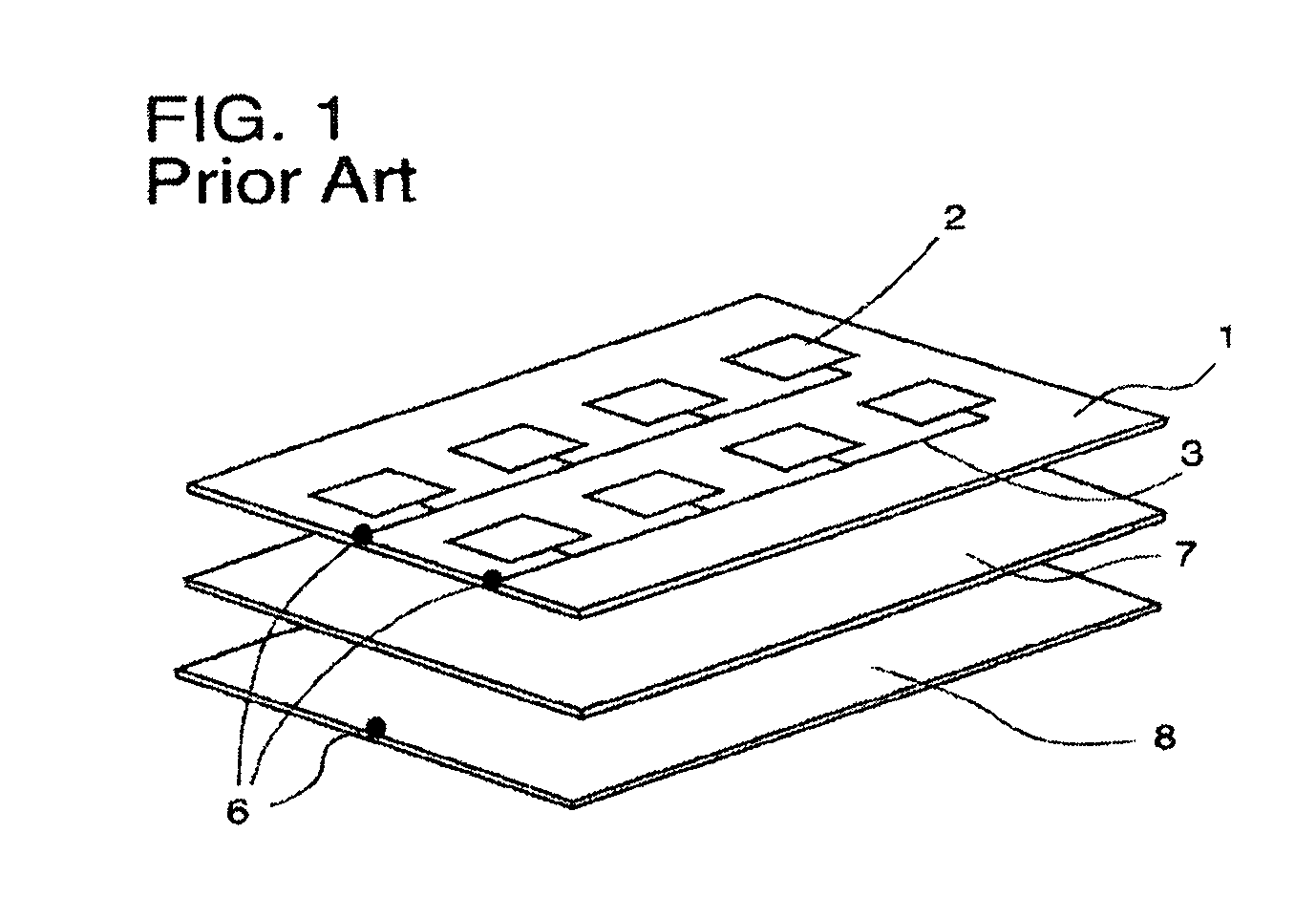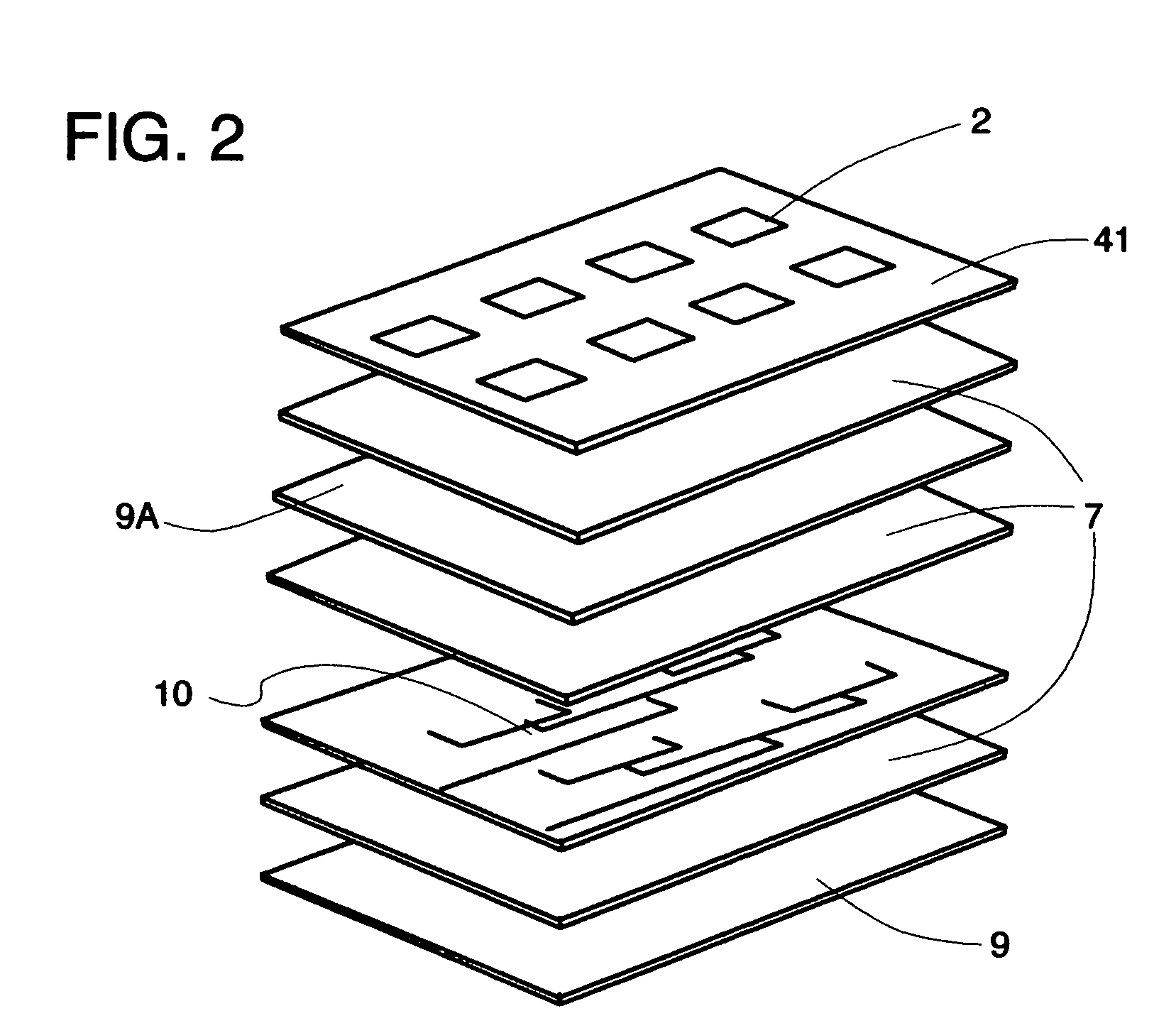Non-woven textile microwave antennas and components
a technology of microwave antennas and components, applied in the field of microstrip patch or slot antennas, can solve the problems of not being flexible and achieve the effects of increasing separation, not being flexible, and adding weight to the antennas
- Summary
- Abstract
- Description
- Claims
- Application Information
AI Technical Summary
Benefits of technology
Problems solved by technology
Method used
Image
Examples
Embodiment Construction
[0025]FIG. 1 is a rendition of the prior art three layer micro-strip antenna commonly employed for transmitting and receiving microwave radiation. This antenna is comprised of a first conductive patterned face layer 1 comprising a set of radiating patch antennas 2 and a set of feed lines 3 that carry energy from a connector means 6 to said patch antennas. While this is depicted as three different pieces (1, 2, 3), in reality the radiating patch layer is composed of a layer of copper that is either milled or acid etched to the desired shaped antenna patches and feed lines. This antenna layer is bonded to a dielectric spacer layer 7, usually composed of Teflon, and bonded to a third layer, the ground plane 8. The conductive portions of this antenna are connected to a receiver or transmitter or transceiver by a connector means 6.
[0026]FIG. 2 is a diagram of the current technology for a stripline antenna design which consists of a radiating layer 41 of antenna patches 2, dielectric spac...
PUM
 Login to View More
Login to View More Abstract
Description
Claims
Application Information
 Login to View More
Login to View More - R&D
- Intellectual Property
- Life Sciences
- Materials
- Tech Scout
- Unparalleled Data Quality
- Higher Quality Content
- 60% Fewer Hallucinations
Browse by: Latest US Patents, China's latest patents, Technical Efficacy Thesaurus, Application Domain, Technology Topic, Popular Technical Reports.
© 2025 PatSnap. All rights reserved.Legal|Privacy policy|Modern Slavery Act Transparency Statement|Sitemap|About US| Contact US: help@patsnap.com



